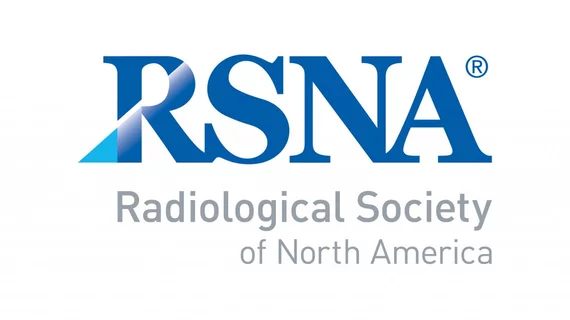Signify Research: 4 trends to watch for at RSNA 2018
With the Radiological Society of North America (RSNA)'s 2018 annual conference fast-approaching, Steve Holloway, with U.K.-based healthcare technology consultancy Signify Research, identified top trends expected to emerge at the 104th meeting on Nov. 25 to 30 in Chicago.
1. Efficiency
Although artificial intelligence (AI) may be a hot topic right now, Holloway believes efficiency will be evident in nearly all aspects of hardware and software at RSNA.
That includes faster hardware, less manual work required from technicians, improved power efficiency and faster boot-up systems, he wrote.
As healthcare providers increasingly consolidate and demand long-term risk-sharing contracts, Holloway believes profitability will require improved clinical and operational performance at the provider level.
“By expanding into the operational and administration budget of providers, big health tech vendors see this as their next big opportunity for growth of professional services, on top of their ongoing hardware and software supply revenue streams,” he wrote.
2. Enterprise imaging
Holloway writes that enterprise imaging, while not a new topic, will be separated into two, hard-to-discern categories at RSNA’s annual meeting: enterprise radiology and enterprise clinical content.
The former encompasses larger radiology enterprise networks, commonly seen with enterprise vendor neutral archives integrating data from multiple PACS into a single platform.
While enterprise radiology provided room for integration of non-radiology content including non-DICOM, the area has focused more inward with modules and add-ons, limiting its accessibility outside of radiology, he wrote.
The latter, enterprise clinical content has trended toward interoperability of structured and unstructured data spanning many departments.
“Over time, both will at some point converge, but until then, enterprise imaging will remain a confusing segment to decipher,” he wrote.
3. Mid-tier vendors
Mid-sized vendors are increasingly being pushed out of the market by larger vendors that can offer a more robust suite of imaging modalities and solutions, especially as healthcare providers move toward integrated care.
That consolidation will be evident with mid-sized vendors for hardware and software products losing space on the showroom floor, Holloway wrote.
However, those vacated spots will be filled by small “best-of-breed” specialist that are not there to necessarily sell products, but build partnerships with healthcare institutions and top vendors.
4. Artificial intelligence
AI was fully evident at last year’s meeting, Holloway wrote, but this year the topic will focus more on supporting radiologists rather than replacing them.
Quantification and measurement tools will be most evident with more examples of AI platforms integrating with imaging IT software platforms.
Clinical decision support tools should not be overlooked but should be considered warily, he said, due to their lack of regulatory approval among other concerns. The interest in these solutions will peak the attention of most attendees, he wrote, since their view is primarily on the future of augmented radiology.
“Work in progress demonstrations will be at every corner, with the heaviest focus around lung, neurology and liver imaging,” Holloway wrote. “Discussion will also focus on availability of data for algorithm development and the complex ongoing challenges surrounding data protectionism, commercialization of de-identified patient data sets and broader interoperability of health data.”

